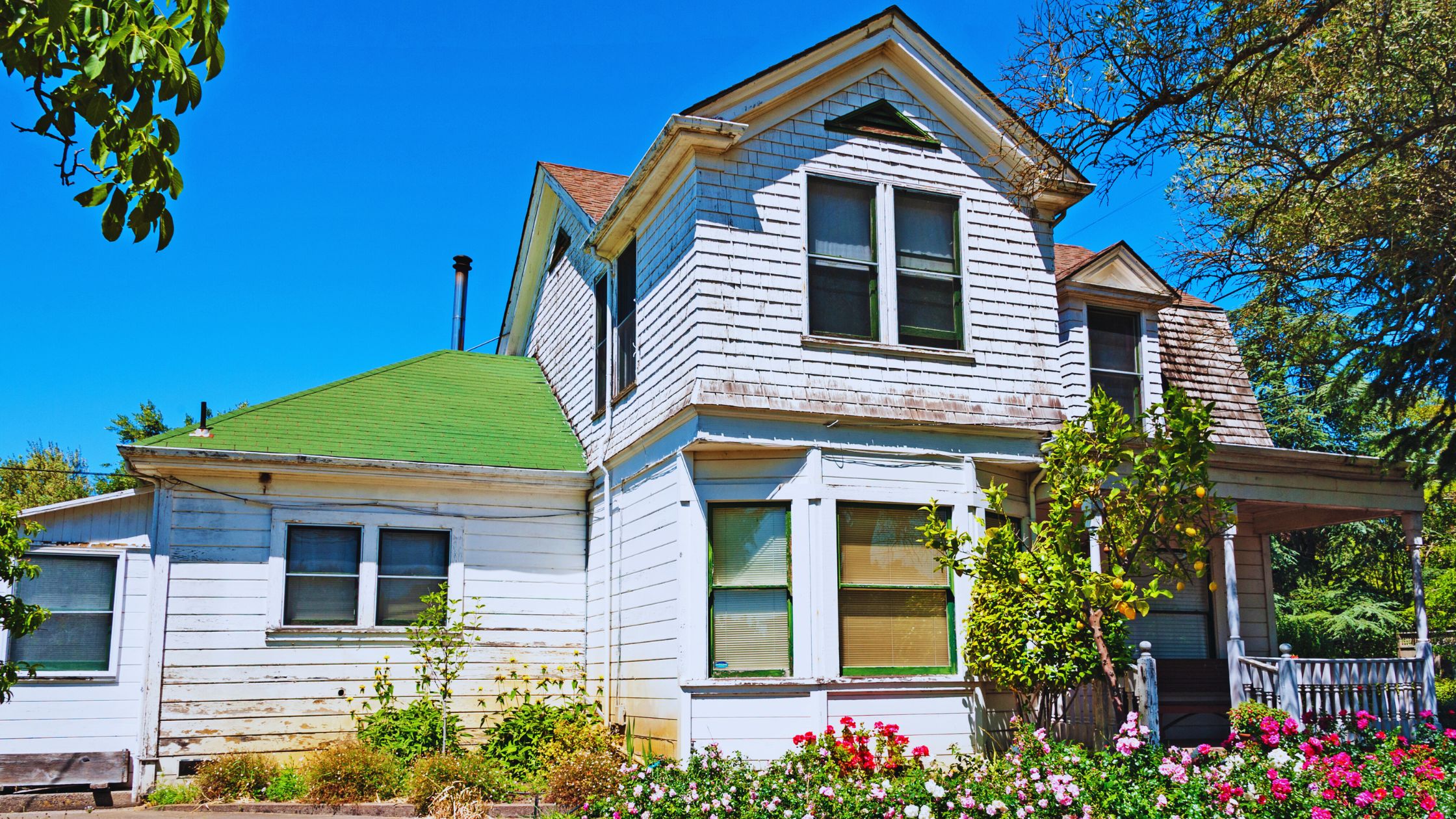
Home improvement loans are becoming increasingly popular as homeowners seek to enhance their living spaces and boost property values. These financial tools provide a way to fund renovations, repairs, and upgrades without depleting savings or relying on high-interest credit cards. With various options available, homeowners can find solutions that fit their specific needs and budgets.
This article explores the top home improvement loan types to consider. It covers FHA 203(k) loans, which combine purchase and renovation costs into a single mortgage. The guide also examines home equity loans, personal loans, and cash-out refinancing options. Additionally, it provides insights on choosing the right loan based on factors such as interest rates, repayment terms, and individual financial situations.
FHA 203(k) Rehab Loans
The Federal Housing Administration (FHA) 203(k) loan is a unique home improvement loan that allows borrowers to finance both the purchase of a home and its renovations under a single mortgage. This loan type is particularly beneficial for those interested in buying fixer-uppers or homeowners planning significant renovations.
Standard 203(k)
The Standard 203(k) loan is designed for larger, more complex renovation projects. It has no maximum renovation amount, but the total loan must fall within FHA mortgage limits. This option is suitable for structural repairs, room additions, and projects exceeding USD 35,000. A HUD-approved consultant is required to oversee the renovation process, ensuring compliance with government regulations.
Limited 203(k)
The Limited 203(k), formerly known as the Streamline 203(k), is intended for minor, non-structural renovations. It has a maximum renovation amount of USD 35,000 and requires less paperwork than the Standard option. This loan type is ideal for cosmetic updates, such as painting, flooring replacement, or energy-efficient upgrades.
Eligibility Requirements
To qualify for an FHA 203(k) loan, borrowers must meet certain criteria. A minimum credit score of 580 is required for a 3.5% down payment, while scores between 500-579 necessitate a 10% down payment. The debt-to-income ratio should typically be below 43%, although exceptions may be made for higher ratios with compensating factors.
FHA 203(k) loans are available to owner-occupants, local governments, and eligible non-profits. The property must be the borrower's primary residence and can include single-family homes, multi-unit properties (up to four units), and certain condos or townhouses.
Home Equity Loans and HELOCs
Home equity loans and home equity lines of credit (HELOCs) are popular options for homeowners looking to tap into their home's equity. These financial tools allow borrowers to access funds using their home as collateral, often at lower interest rates compared to other types of loans.
Home Equity Loan Features
A home equity loan provides a lump sum of cash that borrowers repay over a fixed term, typically ranging from five to 30 years. These loans usually come with fixed interest rates, making monthly payments predictable and easier to budget for. Lenders generally allow borrowers to access up to 80% of their home's equity. Home equity loans can be an excellent choice for those who need a large amount of money for a specific purpose, such as home improvements or debt consolidation.
HELOC Features
A HELOC functions more like a credit card, offering a revolving line of credit that borrowers can draw from as needed. HELOCs typically have variable interest rates, which means monthly payments can fluctuate. The borrowing period, known as the draw period, usually lasts around 10 years, during which borrowers can access funds up to their credit limit. After the draw period ends, the repayment period begins, and borrowers can no longer withdraw funds.
Pros and Cons
Both home equity loans and HELOCs offer advantages such as lower interest rates compared to credit cards and personal loans. They also provide flexibility in how the funds can be used. However, these loans come with risks. Since the home serves as collateral, defaulting on payments could lead to foreclosure. Additionally, if home values decrease, borrowers could end up owing more than their home is worth.
Cash-Out Refinancing
Cash-out refinancing is a popular option for homeowners seeking to fund home improvements. This type of refinancing allows borrowers to replace their existing mortgage with a new, larger loan and receive the difference in cash. The process involves using your home's equity to secure a new mortgage that exceeds your current loan balance.
How It Works
In a cash-out refinance, you take out a new mortgage for more than you currently owe on your house. The difference between the new loan amount and your previous mortgage balance is given to you as cash at closing. For example, if you owe USD 100,000 on your current mortgage and your home is worth USD 300,000, you could potentially refinance for up to USD 240,000 (80% of your home's value) and receive USD 140,000 in cash.
Benefits
Cash-out refinancing offers several advantages. It can provide access to a large amount of cash at a relatively low interest rate compared to personal loans or credit cards. The funds can be used for various purposes, including home renovations, debt consolidation, or other financial needs. Additionally, if you use the money for home improvements, you may be able to deduct the interest on your taxes.
Drawbacks
However, cash-out refinancing also comes with risks. By increasing your mortgage balance, you're taking on more debt and potentially higher monthly payments. There's also the risk of foreclosure if you can't keep up with the new loan terms. Closing costs, typically ranging from 2% to 5% of the loan amount, can add up to a significant expense. It's crucial to carefully consider whether the benefits outweigh the potential drawbacks before proceeding with a cash-out refinance for home improvements.
Choosing the Right Home Improvement Loan
Factors to Consider
When selecting a home improvement loan, several factors come into play. First, assess your project's scope and cost. Determine whether you need a fixed amount or anticipate variable expenses. This helps narrow down your loan options. Next, consider your home equity. Cash-out refinances, HELOCs, and home equity loans require built-up equity in your home.
Your credit profile plays a crucial role. Lenders typically look at your credit score, income stability, and debt-to-income ratio when determining loan eligibility and interest rates. Borrowers with good or excellent credit scores (above 689) often qualify for the lowest personal loan rates.
Time is another factor. If you need funds quickly, personal loans might be your best bet. Most lenders can fund these loans in less than a week, with some even offering same-day deposits.
Comparing Loan Options
Different loan types suit different needs. Home equity loans provide a lump sum with fixed monthly payments, ideal for one-time, large-scale projects. HELOCs offer flexibility, allowing you to draw funds as needed, making them suitable for ongoing or multiple projects.
FHA 203(k) loans combine the cost of buying and renovating a home into a single mortgage. They're particularly useful for purchasing fixer-uppers or homes needing significant repairs.
Personal loans, while often having higher interest rates, offer fast funding without using your home as collateral. They're a good option if you lack home equity or prefer not to risk your property.
Remember, the best home improvement loan balances low total interest costs with monthly payments that fit your budget. Always compare offers from multiple lenders before making a decision.
Choosing the Best Home Improvement Loan for Your Needs
Home improvement loans offer homeowners a variety of options to fund their renovation projects. From FHA 203(k) loans that combine purchase and renovation costs, to home equity loans and HELOCs that tap into existing equity, to cash-out refinancing for larger sums, each type has its own set of benefits and considerations. The choice depends on factors like project scope, available equity, credit score, and timeline.
To make the best decision, homeowners should carefully weigh their options, comparing interest rates, repayment terms, and total costs. It's crucial to consider both short-term needs and long-term financial impacts. By choosing the right loan type, homeowners can transform their living spaces while making a smart investment in their property's value and their overall financial well-being.
FAQs
1. Can I use a home improvement loan to add value before selling my house?
Yes, many homeowners use home improvement loans to make upgrades or repairs that increase the market value of their property before selling.
2. What are the tax benefits of using a home improvement loan?
Interest on home improvement loans, especially HELOCs or cash-out refinancing, may be tax-deductible if the funds are used for eligible home improvements. Consult a tax advisor for details.
3. Are there home improvement loan options for low-credit borrowers?
Yes, FHA 203(k) loans are popular among borrowers with lower credit scores, as they have more flexible eligibility requirements compared to conventional loans.
4. How quickly can I get funds from a home improvement loan?
Funding times vary. Personal loans can provide same-day or next-day funds, while home equity loans or FHA 203(k) loans may take a few weeks to process.
5. What are the risks of using your home as collateral for a home improvement loan?
Using your home as collateral for loans like HELOCs or home equity loans can result in foreclosure if you fail to make payments, so it's essential to carefully consider your ability to repay.


.jpg)